Abstract
Injection of hamsters with endotoxin (LPS) resulted, 4 to 14 days later, in a marked decline in the mast cell count and in a reduction of the available histamine content of cells obtained by peritoneal lavage. The release of histamine from isolated peritoneal hamster mast cells in vitro could be achieved by incubating LPS with fresh hamster serum followed by addition of mast cells and a second incubation. The generation of a histamine-releasing factor from serum could be inhibited by conditions which inhibit the consumption of complement by LPS. Several substances could be substituted for LPS in the generation of histamine-releasing activity including heat-aggregated human gamma globulin, zymosan, purified cobra venom factor, and washed antigen-antibody precipitates. With all of these agents, the generation of a histamine-releasing substance from hamster serum was accompanied by consumption of hemolytic complement. The results suggest that LPS indirectly leads to the release of histamine from mast cells as a result of interactions with the complement system.
Full text
PDF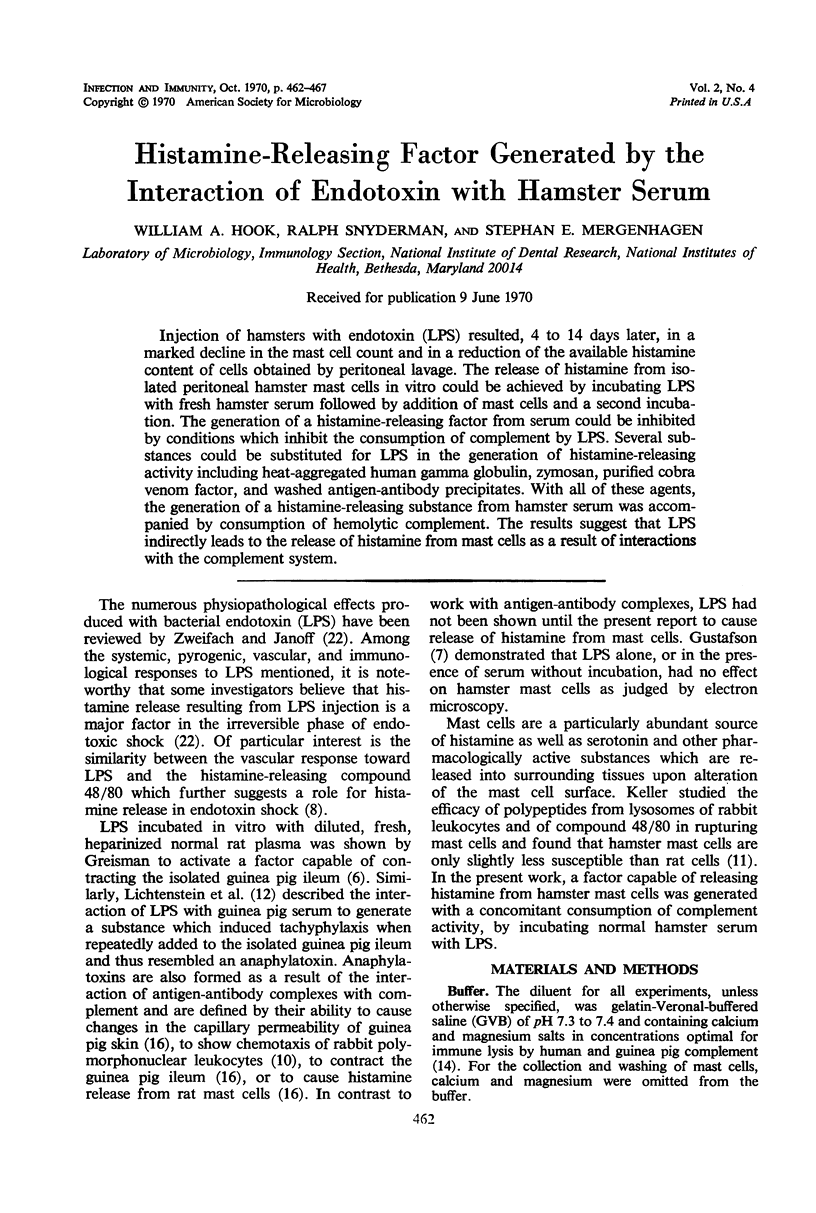
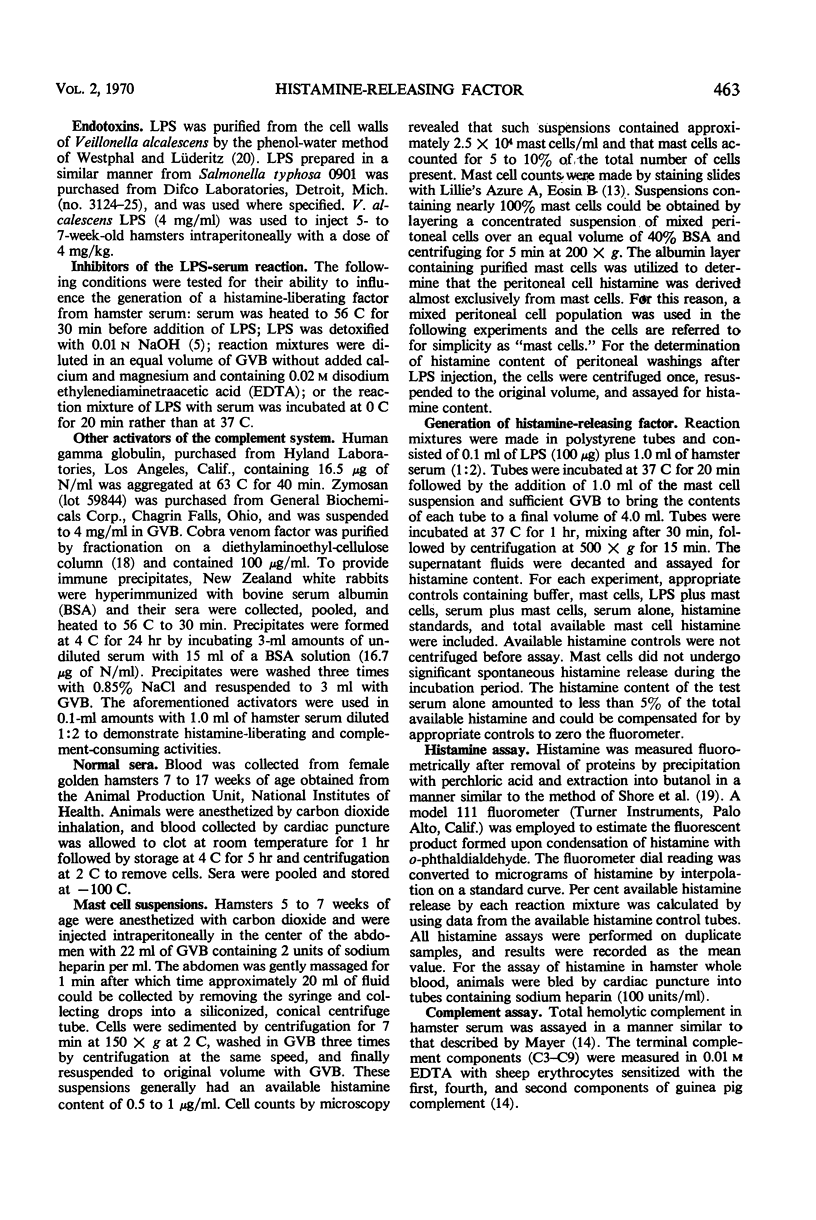
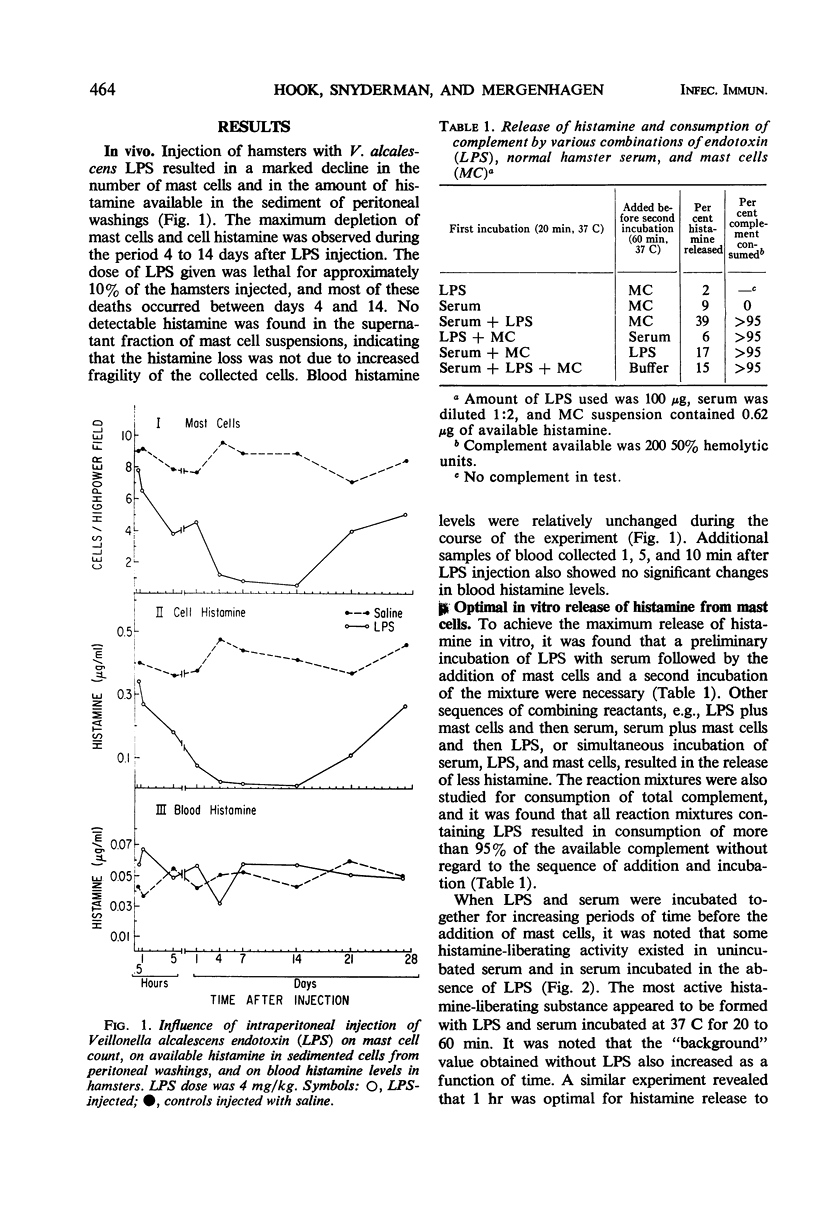
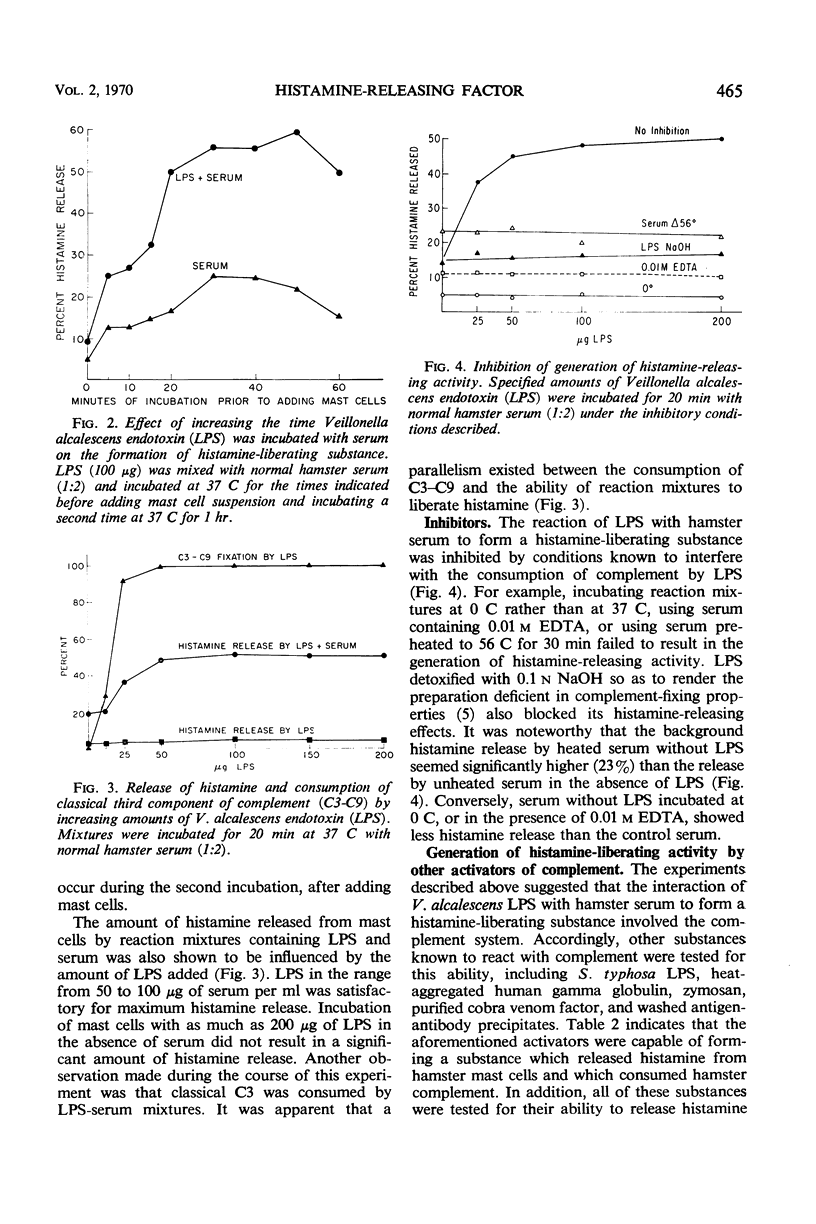

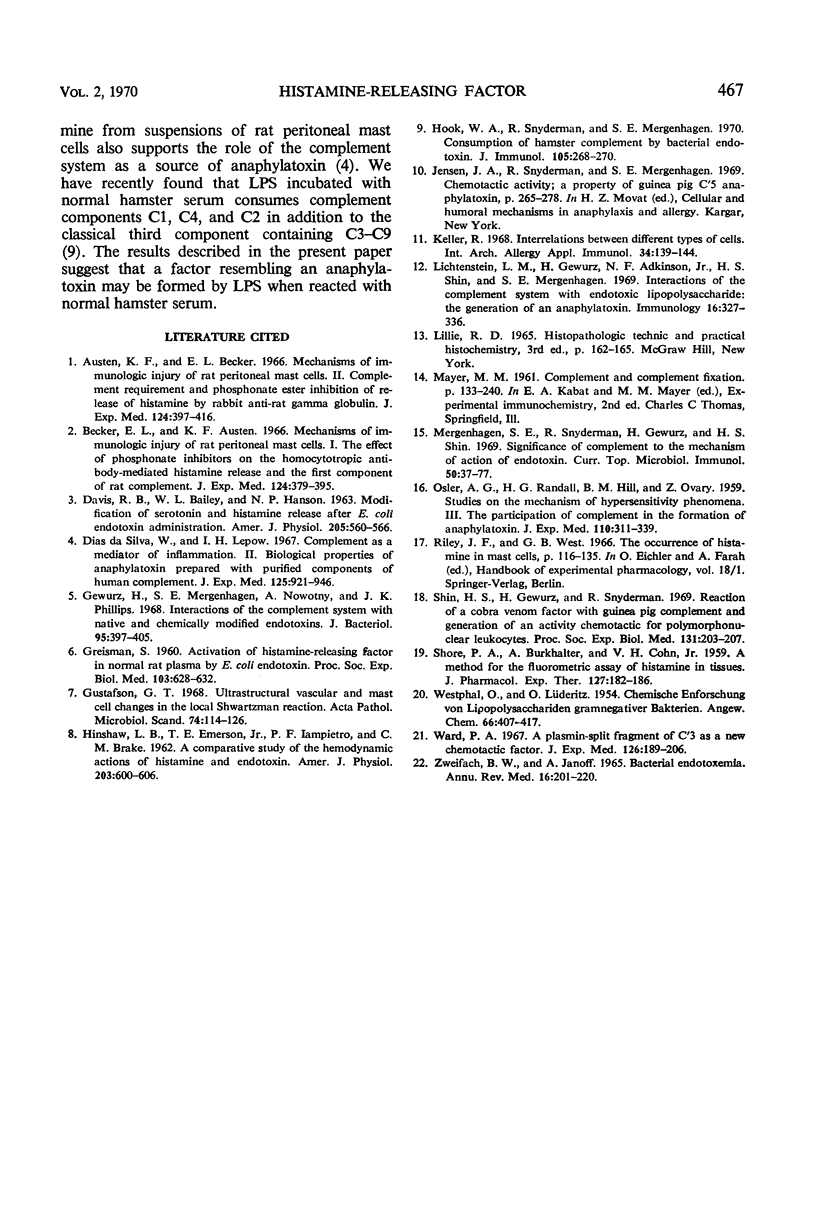
Selected References
These references are in PubMed. This may not be the complete list of references from this article.
- Austen K. F., Becker E. L. Mechanisms of immunologic injury of rat peritoneal mast cells. II. Complement requirement and phosphonate ester inhibition of release of histamine by rabbit anti-rat gamma globulin. J Exp Med. 1966 Sep 1;124(3):397–416. doi: 10.1084/jem.124.3.397. [DOI] [PMC free article] [PubMed] [Google Scholar]
- Becker E. L., Austen K. F. Mechanisms of immunologic injury of rat peritoneal mast cells. I. The effect of phosphonate inhibitors on the homocytotropic antibody-mediated histamine release and the first component of rat complement. J Exp Med. 1966 Sep 1;124(3):379–395. doi: 10.1084/jem.124.3.379. [DOI] [PMC free article] [PubMed] [Google Scholar]
- DAVIS R. B., BAILEY W. L., HANSON N. P. MODIFICATION OF SEROTONIN AND HISTAMINE RELEASE AFTER E. COLI ENDOTOXIN ADMINISTRATION. Am J Physiol. 1963 Sep;205:560–566. doi: 10.1152/ajplegacy.1963.205.3.560. [DOI] [PubMed] [Google Scholar]
- Dias Da Silva W., Lepow I. H. Complement as a mediator of inflammation. II. Biological properties of anaphylatoxin prepared with purified components of human complement. J Exp Med. 1967 May 1;125(5):921–946. doi: 10.1084/jem.125.5.921. [DOI] [PMC free article] [PubMed] [Google Scholar]
- GREISMAN S. E. Activation of histamine-releasing factor in normal rat plasma by E. coli endotoxin. Proc Soc Exp Biol Med. 1960 Mar;103:628–632. doi: 10.3181/00379727-103-25618. [DOI] [PubMed] [Google Scholar]
- Gewurz H., Mergenhagen S. E., Nowotny A., Phillips J. K. Interactions of the complement system with native and chemically modified endotoxins. J Bacteriol. 1968 Feb;95(2):397–405. doi: 10.1128/jb.95.2.397-405.1968. [DOI] [PMC free article] [PubMed] [Google Scholar]
- Gustafson G. T. Ultrastructural vascular and mast cell changes in the local Shwartzman reaction. Acta Pathol Microbiol Scand. 1968;74(1):114–126. doi: 10.1111/j.1699-0463.1968.tb03461.x. [DOI] [PubMed] [Google Scholar]
- HINSHAW L. B., EMERSON T. E., Jr, IAMPIETRO P. F., BRAKE C. M. A comparative study of the hemodynamic actions of histamine and endotoxin. Am J Physiol. 1962 Oct;203:600–606. doi: 10.1152/ajplegacy.1962.203.4.600. [DOI] [PubMed] [Google Scholar]
- Hook W. A., Snyderman R., Mergenhagen S. E. Consumption of hamster complement by bacterial endotoxin. J Immunol. 1970 Jul;105(1):268–270. [PubMed] [Google Scholar]
- Keller R. Interrelations between different types of cells. II. Histamine-release from the mast cells of various species by cationic polypeptides of polymorphonuclear leukocyte lysosomes and other cationic compounds. Int Arch Allergy Appl Immunol. 1968;34(2):139–144. [PubMed] [Google Scholar]
- Lichtenstein L. M., Gewurz H., Adkinson N. F., Jr, Shin H. S., Mergenhagen S. E. Interactions of the complement system with endotoxic lipopolysaccharide: the generation of an anaphylatoxin. Immunology. 1969 Mar;16(3):327–336. [PMC free article] [PubMed] [Google Scholar]
- Mergenhagen S. E., Snyderman R., Gewurz H., Shin H. S. Significance of complement to the mechanism of action of endotoxin. Curr Top Microbiol Immunol. 1969;50:37–77. doi: 10.1007/978-3-642-46169-9_2. [DOI] [PubMed] [Google Scholar]
- OSLER A. G., RANDALL H. G., HILL B. M., OVARY Z. Studies on the mechanism of hypersensitivity phenomena. III. The participation of complement in the formation of anaphylatoxin. J Exp Med. 1959 Aug 1;110(2):311–339. doi: 10.1084/jem.110.2.311. [DOI] [PMC free article] [PubMed] [Google Scholar]
- SHORE P. A., BURKHALTER A., COHN V. H., Jr A method for the fluorometric assay of histamine in tissues. J Pharmacol Exp Ther. 1959 Nov;127:182–186. [PubMed] [Google Scholar]
- Shin H. S., Gewurz H., Snyderman R. Reaction of a cobra venom factor with guinea pig complement and generation of an activity chemotactic for polymorphonuclear leukocytes. Proc Soc Exp Biol Med. 1969 May;131(1):203–207. doi: 10.3181/00379727-131-33840. [DOI] [PubMed] [Google Scholar]
- Ward P. A. A plasmin-split fragment of C'3 as a new chemotactic factor. J Exp Med. 1967 Aug 1;126(2):189–206. doi: 10.1084/jem.126.2.189. [DOI] [PMC free article] [PubMed] [Google Scholar]
- ZWEIFACH B. W., JANOFF A. BACTERIAL ENDOTOXEMIA. Annu Rev Med. 1965;16:201–220. doi: 10.1146/annurev.me.16.020165.001221. [DOI] [PubMed] [Google Scholar]


